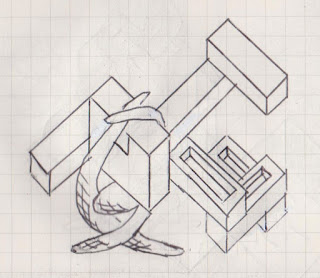WEEK 3:
LUMION FINAL IMAGES
THE TWO CONCEPTS:
1. Simple shapes repeated and assembled together create complex works: In Herzog and De Meurons' work, buildings are often composed of simple shapes such as rectangles and triangles that have been extruded. When several of these are assembled together, they create complex architecture. This is shown in the light rail station through the extrusion of basic shapes. These shapes can also be used to create complex and intricate patterns through continual repetition and when these shapes are densely packed, shown through the diamond texture. Moreover, two simple curves work together to resemble a complex knot that ties the two areas together whilst also providing seats, showing how simple shapes can work together to create multi-functional and elaborate structures.
2. Grids create proportion and restraint: In Walter Gropius' work, windows and facades often have grid patterns indented or placed onto it, giving the building a sense of enclosure and emphasising the idea of proportions. Grids limit how elements are arranged and scaled which causes the architecture to become rigid and orderly. This restraint is shown in the light rail station through the flowers that are restrained to only grow in the grid space of the rectangular prism and the seating that is in the shape of a grid, constraining users to sit within that space. Also, the beams that protrude down to the platform
defines clear boundaries between spaces and enclose the platform space. Even the amount of light entering the space is controlled by a grid, shown through the rectangular grid that surrounds the yellow glass shade.
The
grid-like texture on the geometric square shade reinforces the restraint on the
less rigid circular shade.
Simplicity is shown through the basic shapes and primary colours, and the minimalism is further enforced through the transparency of the glass shades and platform. These shapes are arranged and repeated until a complex structure is created. The differences in size in the black and yellow quadrant shades emphasise the importance of proportion that is evident in Gropius' works.
The veranda's design contains small and simple squares that are repeated several times across the minimalistic white shade. The result is a shading device with complex patterns that filter light in various directions. This sense of complexity through repetition is evident in many of Herzog and De Meuron's works.
-







































